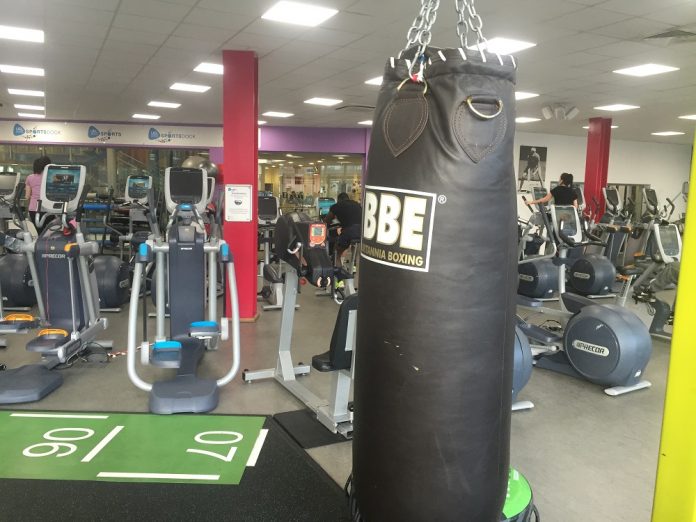Nigel Benn, Daniel Dubois, Connor Benn, Chris Eubank, Denzel Bentley, Frank Bruno, Derek Chisora. What do all of these world-class former and current boxers have in class? They all hail from or grew up in East London.
It has been long argued that the heart of boxing is right in the capital, in East London. No other part of the UK has produced more world, and European champions at amateur and professional level, across all the weight divisions. That in itself is a fascinating and stunning fact.
Fighting for a better life
As per Britannica.com, East London is widely known – among other things – for its poverty levels. Growing up on the mean streets of East London moulded these fighters into the warriors they needed to be. Parents that worked long hours in extremely undesirable jobs that sometimes simply couldn’t feed their kids. It wasn’t necessarily a burning passion for the sport that got these fighters fighting, but empty bellies, and a dream for a better life. In a tough and extremely unnerving environment, it seemed the only way to make something of yourself.
Evolving the sport on his own
The history runs deep, and arguably starts with Daniel Mendoza. Mendoza was an English Prizefighter and was the 18th boxing champion of England. Mendoza was born in 1764 in Whitechapel. He is widely regarded as the man who changed boxing forever with his new defensive style stance, and the punches he threw. Prior to his emergence in the sport, boxing was bereft of tactics and it was quite simply two boxers standing idle just throwing punches at each other. Mendoza single-handedly evolved the sport on his own, and his style of boxing was revolutionary for the sport.
His style was heavily based on defensive movement as he wasn’t the biggest fighter, only coming in at 5”7, and weighing 160 pounds. His movement included a strategy of side-stepping, ducking, blocking and rapid movement. Essentially, he did everything to avoid being hit, something never seen before. Offensively, Mendoza did improve the sport, making it more appealing for spectators. His new stance included the guard, in which he raised his arms to protect his head and his forearms tucked in to protect himself against the threat of body shots. This evolved the sport as his opponents had to come up with new ways to strike him.
His new strategy was met with heavy criticism, with many labelling Mendoza a ‘coward’ due to him ducking and side-stepping punches thrown. However, all of his new strategies benefitted Mendoza massively, due to his small stature. Despite being just 5”7, he remains the only middleweight to ever win the Heavyweight Championship of England.
Crime was his downfall
Unfortunately, Mendoza, despite being an admired figure, was guilty of many crimes. And these crimes are thought to have caused his decline in the sport. Despite holding the championship, his popularity became so low that he had to find other work as means to provide for his family.
The catalyst for boxing as a sport?
His official record stands at 37 fights, 34 wins, 30 wins by KO and three losses. And he is also credited for literal professional boxing, as his fights were the first events where people paid to watch his fights as if it was a sport.
It’s likely that someone would have eventually evolved boxing the way it is today. But Daniel Mendoza from Whitechapel, England was the man who laid the foundations for boxing as it is viewed today due to his tactics to overcome his opponents. He elevated his opponents’ game to try and out manoeuvre him, which was the springboard of the evolution of high-quality boxing on our screens to this day.
Fast forward to the 1960’s, and Terry Spinks was the new face of East London and British boxing. Nicknamed “The Golden Boy” Spinks was born in West Ham and was recognised as the only British boxer to win all major British titles amassed over his incredible 200 amateur fights and 41 professional fights. In 1956, Spinks won an Olympic gold medal, and in doing so became the youngest ever to win an Olympic gold in boxing. Spinks is a true rags-to-riches story, A West Ham dustman to one of the best boxers Britain has produced.
Post Spinks, Nigel Benn broke all of the TV viewing figures in the modern era of boxing. The Dark Destroyer had a very respectable record of 48 fights, 42 wins, 35 wins by KO, one draw and five losses. Benn had won various championships and is recognised as a true great. He entered the WBC hall of fame in 2013 and has raised money to aid various gyms in Australia. Benn’s children are looking to emulate their father as both Connor and Harley Benn are both professional boxers.
East London boxing still punching.
Despite not churning out champion after champion, boxing is still rife in the capitals East. Arguably East London’s most famous boxing gym, Repton boxing club is still alive and kicking today. It was opened in 1884, and was the training home of Audley Harrison, Ray Winston and the infamous Kray twins. East London has various other gyms, some revamped in the modern era, with some still sticking to their roots, East London boxing is clearly here to stay and continue one of its oldest traditions: producing elite fighters.

